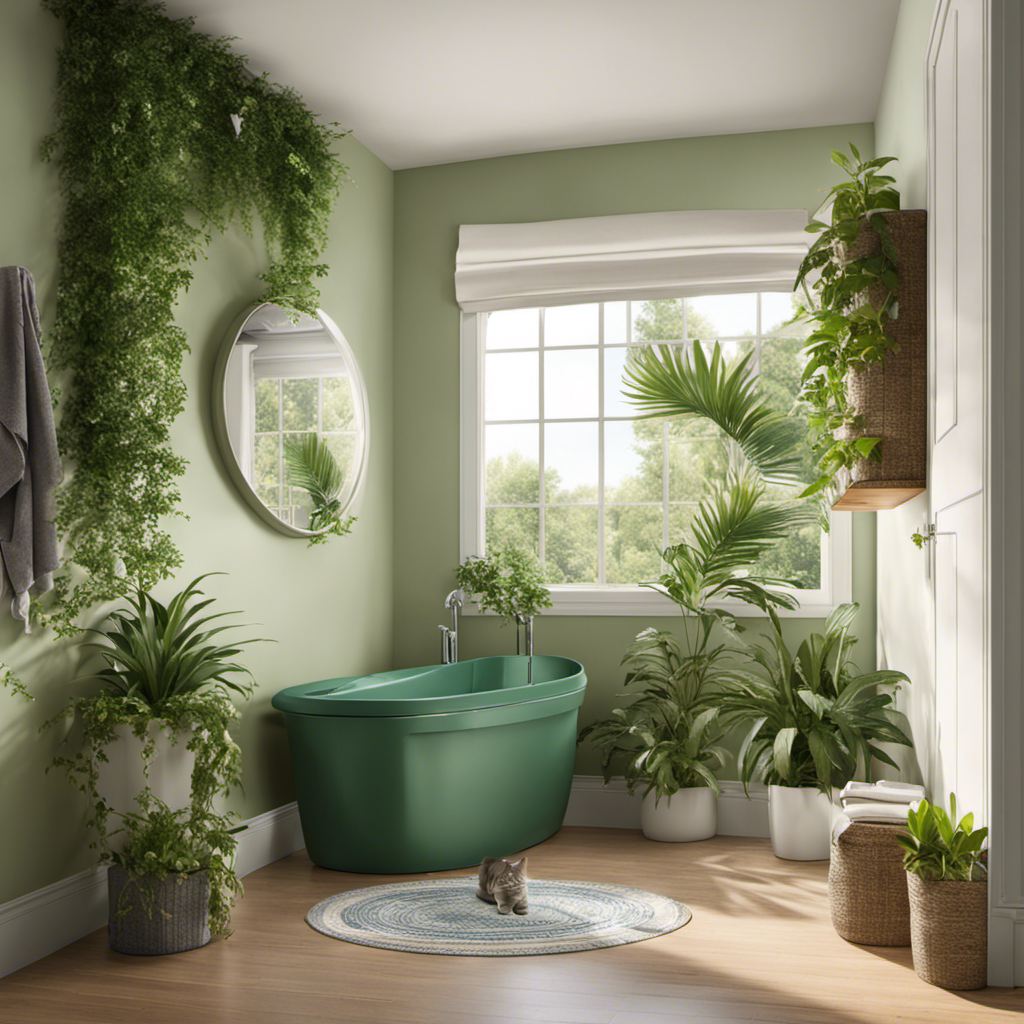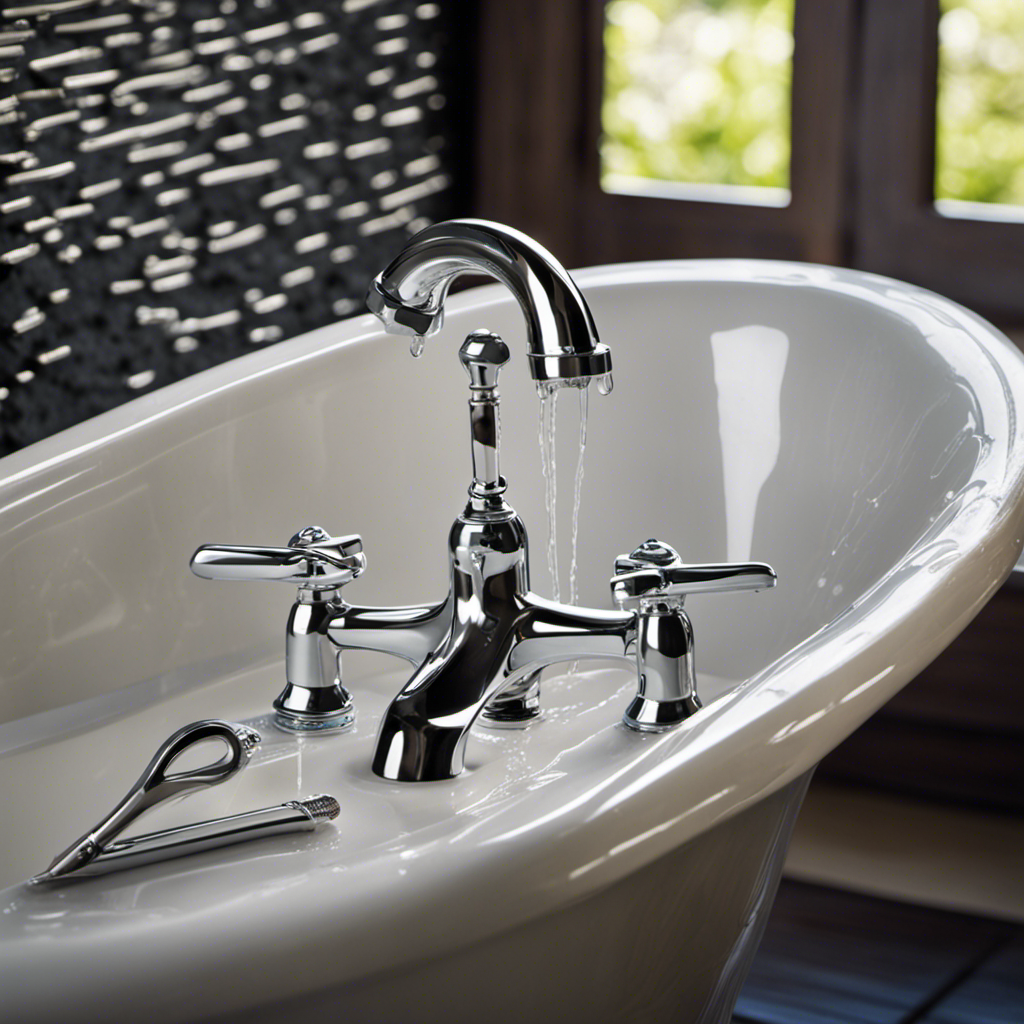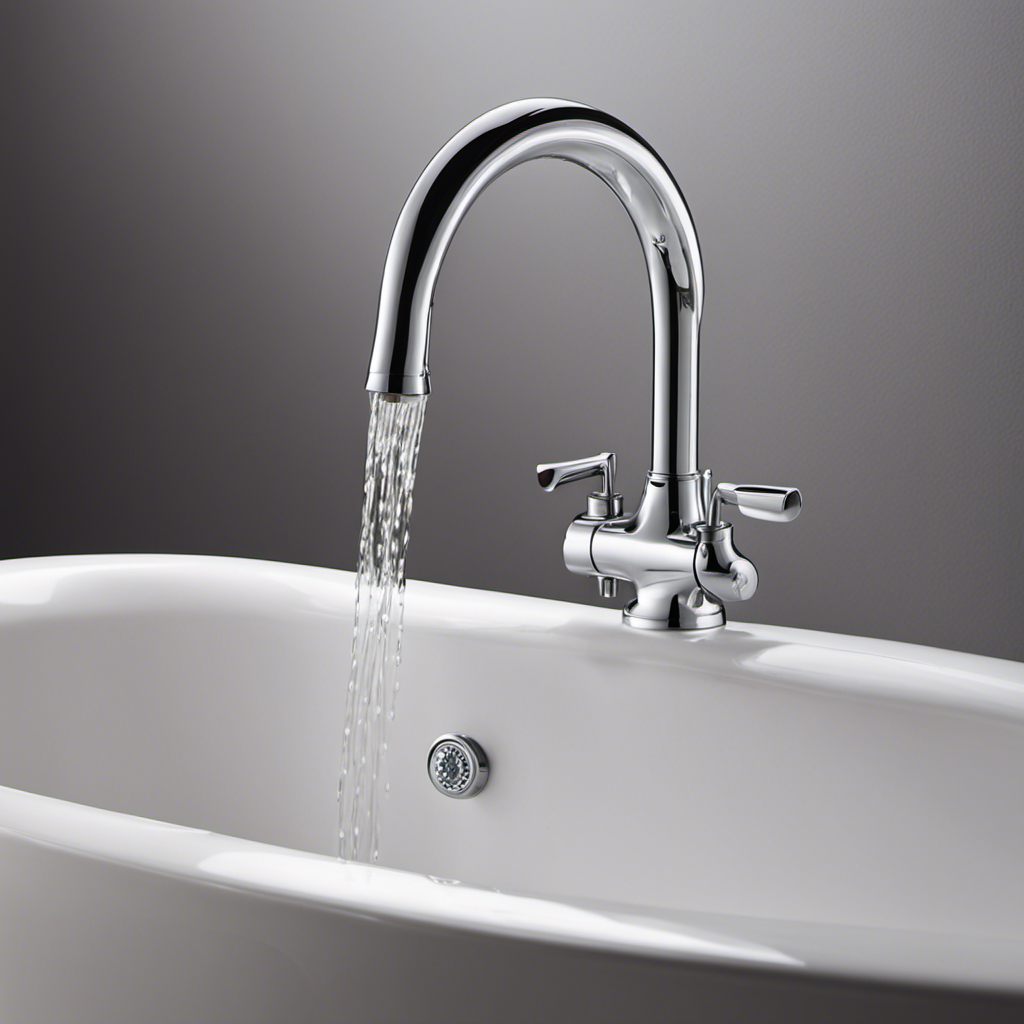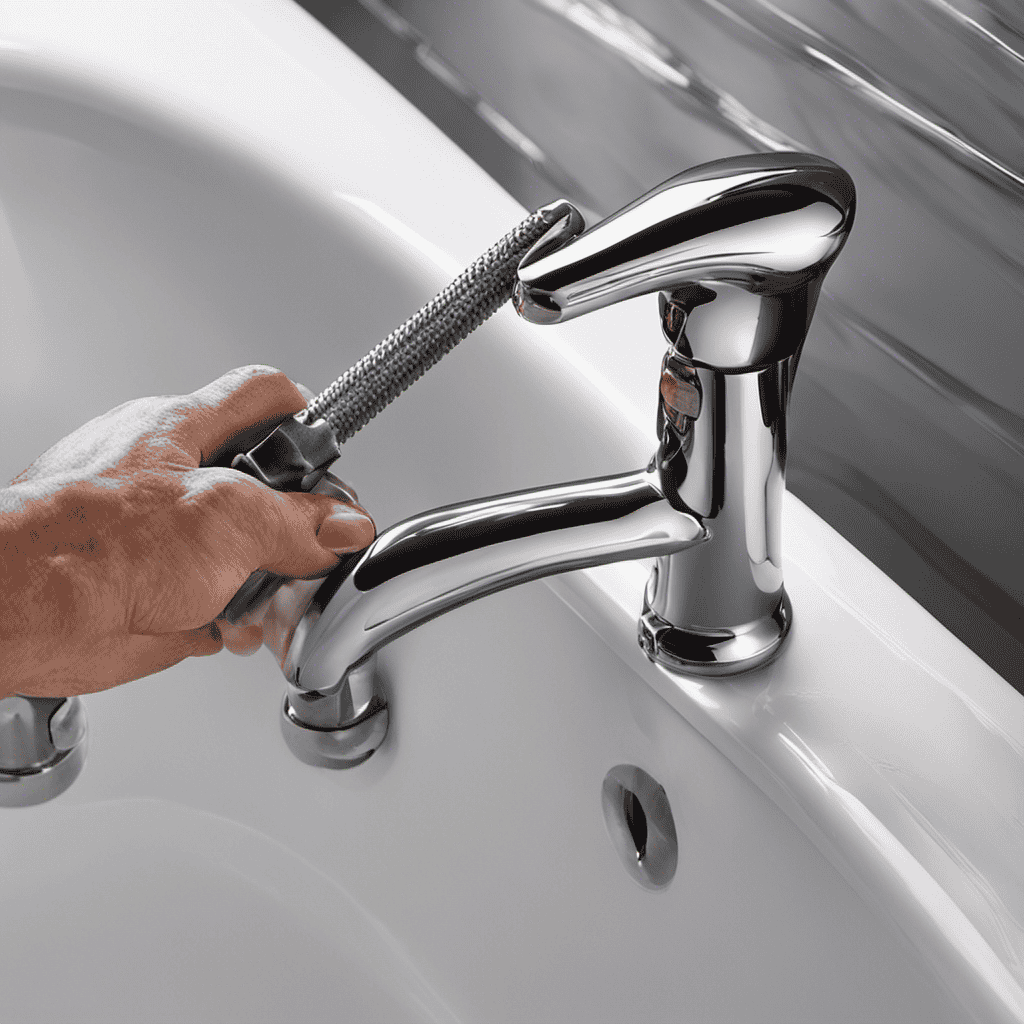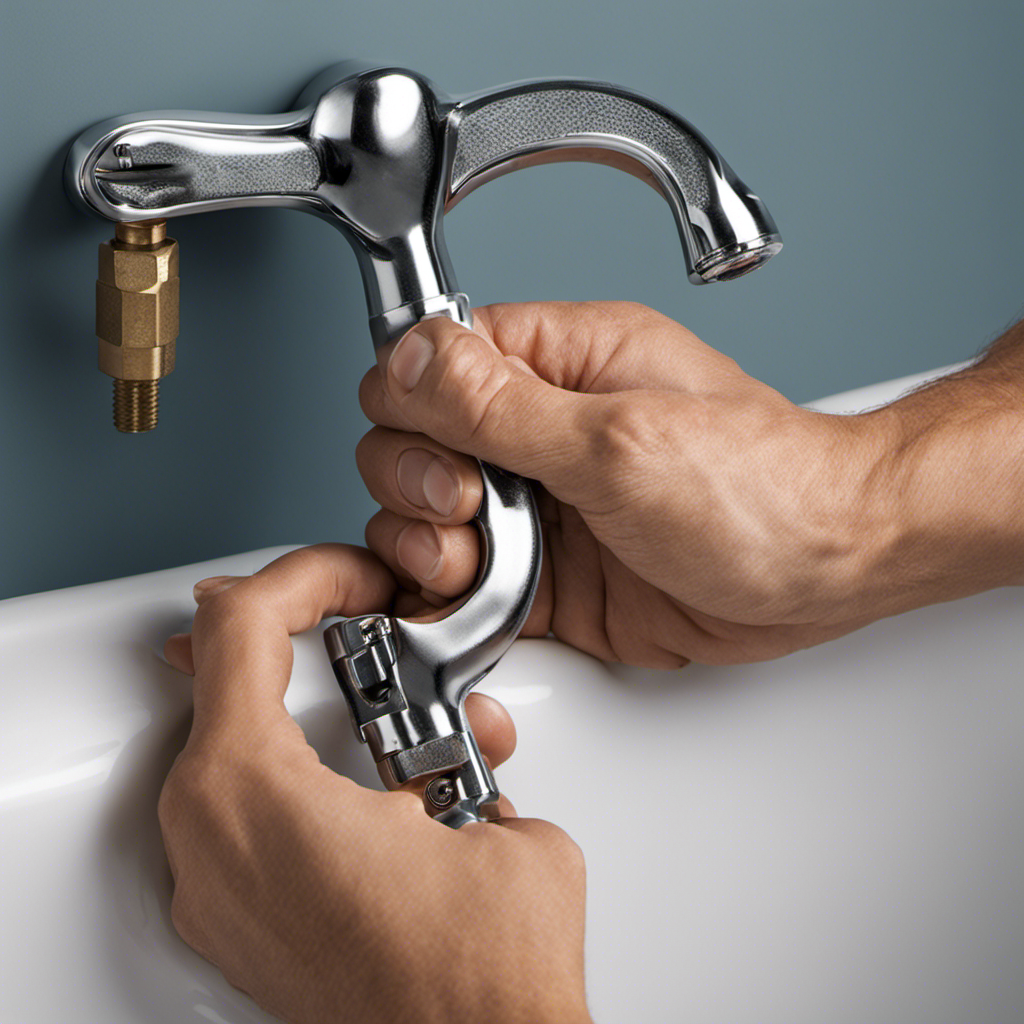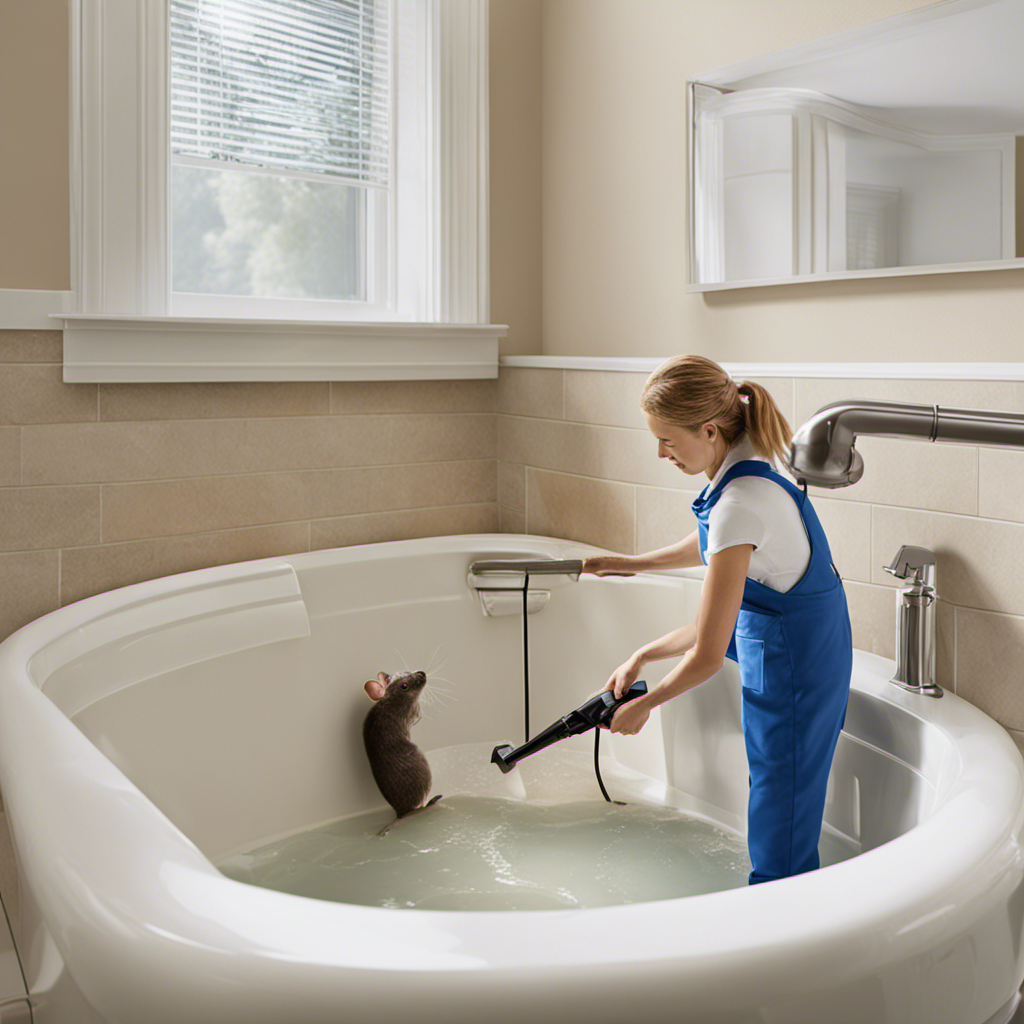I’ve been there, standing in the bathroom, frustrated and bewildered by the sight of my cat relieving itself in the bathtub. It’s a situation that can quickly become overwhelming, but fear not!
In this article, I’ll guide you through effective strategies and techniques to put an end to this undesirable behavior. By understanding the reasons behind it, creating a comfortable litter box environment, implementing behavioral training, and using deterrents, you’ll regain peace in your bathroom.
Let’s dive in and reclaim our bathtubs from our feline friends!
Key Takeaways
- Understanding the reasons behind the behavior, such as stress, territorial marking, and urinary tract infections, is crucial in addressing the issue.
- Creating a comfortable litter box environment, including spacious and easily accessible locations, unscented litter, and daily cleaning, can help prevent cats from peeing in the bathtub.
- Implementing behavioral training techniques, such as positive reinforcement and consistency, can encourage cats to use the litter box instead of the bathtub.
- Using deterrents and repellents in the bathroom, such as citrus-based sprays or vinegar and water solutions, can help train cats to avoid urinating in the bathtub.
Understanding the Reasons Behind the Behavior
To understand why your cat is peeing in the bathtub, you should consider various factors such as stress, territorial marking, or a urinary tract infection.
Cats may exhibit this behavior due to medical conditions or environmental stress. Medical conditions such as a urinary tract infection or bladder stones can cause discomfort and lead to inappropriate elimination. It is important to rule out any underlying medical issues by consulting with a veterinarian.
Environmental stressors like changes in routine, new pets, or moving to a new home can also trigger this behavior. Cats are sensitive creatures, and any disruption to their environment can cause them to seek alternative places to urinate.
Providing a calm and secure environment, along with proper litter box management, can help address and prevent this issue.
Creating a Comfortable Litter Box Environment
Make sure you’re providing a comfortable litter box environment for your feline friend by choosing a spacious and easily accessible location. Cats have specific preferences when it comes to their litter box, so it’s important to create an environment that meets their needs.
Here are some key considerations:
-
Litter box preferences:
-
Choose a box that is large enough for your cat to comfortably move around in.
-
Use unscented litter, as cats can be sensitive to strong smells.
-
Scoop the litter box daily to maintain cleanliness and freshness.
-
Litter box placement:
-
Place the litter box in a quiet and private area of your home.
-
Avoid placing it near loud appliances or areas with heavy foot traffic.
-
Make sure the litter box is easily accessible and not blocked by obstacles.
Implementing Behavioral Training Techniques
Implementing behavioral training techniques can help address any litter box issues your cat may be experiencing. Positive reinforcement is a key aspect of this type of training. By rewarding your cat with treats or praise when they use the litter box, you can encourage them to continue using it.
Consistency in training techniques is also crucial. Make sure to use the same commands and rewards every time.
Additionally, it’s important to identify any potential stressors that may be causing your cat to avoid the litter box. Stress can lead to inappropriate elimination behavior.
Once you have addressed these issues, you can gradually introduce your cat to the bathroom using deterrents and repellents to prevent them from peeing in the bathtub.
Using Deterrents and Repellents in the Bathroom
Using deterrents and repellents in the bathroom can help discourage your cat from urinating in unwanted areas. Cats are naturally drawn to certain scents, so by using natural remedies as deterrents, you can effectively train your cat to avoid urinating in the bathtub.
Here are three sub-lists of natural remedies and cleaning products that can help:
-
Citrus-based sprays: Cats dislike the smell of citrus, so spraying a citrus-based repellent in the bathroom can deter them from urinating in the bathtub.
-
Vinegar and water solution: Mix equal parts vinegar and water in a spray bottle and apply it to the areas where your cat tends to urinate. The strong smell of vinegar will discourage them from using the bathtub as a litter box.
-
Essential oils: Certain essential oils, such as lavender or peppermint, can act as natural repellents for cats. Mix a few drops of the oil with water and use it as a spray in the bathroom.
Seeking Professional Help and Consultation
Seeking professional help and consultation can provide valuable insights and guidance on how to address your cat’s urination issues in the bathroom. When it comes to dealing with unwanted behaviors like peeing in the bathtub, consulting a professional is always a good idea.
They can offer expert advice on behavior modification techniques that can help resolve the issue. A professional will assess your cat’s specific situation, taking into consideration factors like their age, health, and environment. They may recommend techniques such as positive reinforcement training or environmental enrichment to redirect your cat’s behavior.
Additionally, they can help identify any underlying medical conditions that may be contributing to the problem. Remember, professional advice is invaluable when it comes to effectively addressing and modifying your cat’s behavior.
Frequently Asked Questions
Can I Use Regular Household Cleaning Products to Clean the Bathtub After My Cat Has Urinated in It?
Yes, you can use regular household cleaning products to clean the bathtub after my cat has urinated in it. However, it’s best to use natural cleaning products to avoid any potential harm to your cat.
How Long Does It Typically Take for a Cat to Adjust to a New Litter Box Setup?
Litter box training can be a challenge, but with patience and persistence, cats can adjust to a new setup within a few weeks. Consistency, cleanliness, and providing multiple options can help ease the transition.
Are There Any Natural Remedies or Homeopathic Solutions That Can Help Deter Cats From Peeing in the Bathtub?
There are natural deterrents and behavior modification techniques that can help stop cats from peeing in the bathtub. By using these remedies, you can effectively modify their behavior and prevent future accidents.
Can I Use a Spray Bottle With Water to Discipline My Cat When It Pees in the Bathtub?
Yes, using a water spray bottle can be an effective way to discipline a cat when it pees in the bathtub. However, there are also alternative cat pee deterrents available that you can try.
Are There Any Specific Types of Litter or Litter Box Designs That Are More Effective at Preventing Cats From Peeing in the Bathtub?
There are various types of litter alternatives and bathtub liners that can be effective in preventing cats from peeing in the bathtub. I can provide more information on these options if needed.
Conclusion
In conclusion, preventing cats from peeing in the bathtub requires a combination of understanding their behavior, creating a suitable litter box environment, implementing training techniques, and using deterrents.
By addressing the root causes and providing a comfortable and appealing alternative, we can successfully redirect their behavior. Remember, consistency and patience are key in this process.
So, don’t hesitate to seek professional help if needed. Together, we can create a harmonious bathroom environment for both you and your furry companion.
